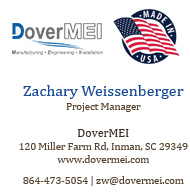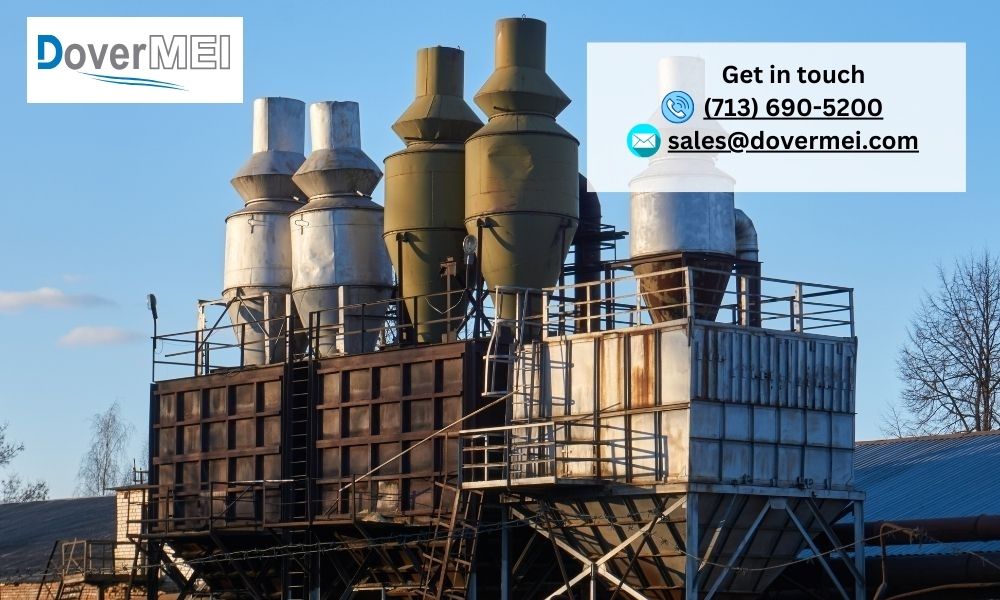Efficient dust collection systems are vital for maintaining air quality, protecting worker health, and ensuring equipment longevity in industrial environments. Selecting the right type of dust collector for your specific application can significantly improve operational efficiency and compliance with environmental regulations.
In this guide, we explore the different types of dust collectors—including baghouse, cartridge, and cyclone—and provide a detailed framework for choosing the ideal system for your industry.
Baghouse Dust Collectors
Baghouse dust collectors are among the most common and effective solutions for large-scale dust filtration. They operate by drawing contaminated air through fabric filter bags that capture dust particles while allowing clean air to pass through.
Key Advantages:
- High filtration efficiency, capable of removing particles as small as 1 micron.
- Large dust load capacity, suitable for heavy industrial environments.
- Durability in high-temperature and high-moisture conditions.
Best For:
- Cement manufacturing
- Metal fabrication and welding operations
- Chemical processing facilities
- Power generation plants
Maintenance Tip: Regularly inspect and replace filter bags to maintain airflow efficiency and prevent dust buildup that can damage fans or blowers.
Cartridge Dust Collectors
Cartridge dust collectors utilize pleated filter cartridges, providing a large filtration surface area within a compact design. They excel in applications requiring fine dust filtration and are often preferred where space is limited.
Key Advantages:
- Compact footprint, ideal for facilities with limited floor space.
- Quick-change filters, reducing maintenance downtime.
- High filtration efficiency for fine powders and hazardous particulates.
Best For:
- Pharmaceutical manufacturing
- Food and beverage processing
- Powder coating operations
- Laser and plasma cutting
Maintenance Tip: Use pulse-jet cleaning systems to extend cartridge life and maintain consistent airflow.
Cyclone Dust Collectors
Cyclone dust collectors separate particles from the airstream using centrifugal force. While they typically handle larger particles, they are often used as pre-cleaners to reduce the load on other dust collection equipment.
Key Advantages:
- Low maintenance with no filter media to replace.
- Effective for large, abrasive particles.
- Durable design for heavy-duty applications.
Best For:
- Woodworking shops
- Agricultural processing
- Mining and mineral handling
- Grain and bulk solids handling
Maintenance Tip: Pair with a secondary filtration system if fine particle removal is required.
Wet Scrubbers
Wet scrubbers capture dust by introducing a scrubbing liquid into the airstream. Particles become trapped in the liquid droplets and are removed from the air.
Key Advantages:
- Effective for sticky or explosive dust.
- Can handle high-temperature and high-humidity environments.
- Also removes some gaseous pollutants.
Best For:
- Chemical manufacturing
- Foundries
- Food processing with sticky dust residues
Maintenance Tip: Monitor scrubbing liquid quality and pH levels to prevent corrosion and bacterial growth.
Portable Dust Collectors
For operations where dust generation is not constant or is spread across different workstations, portable dust collectors offer flexibility and targeted dust removal.
Key Advantages:
- Mobility for on-demand dust collection.
- Quick setup with minimal installation requirements.
- Versatility for a variety of applications.
Best For:
- Welding and grinding stations
- Temporary work areas
- Maintenance operations
Maintenance Tip: Keep flexible hoses and connections in good condition to prevent leaks and airflow loss.
Factors to Consider When Choosing a Dust Collector
Choosing the right dust collector depends on several key factors:
- Type of dust: Particle size, abrasiveness, and explosiveness.
- Airflow requirements: Measured in cubic feet per minute (CFM).
- Space constraints: Available floor and ceiling height.
- Maintenance needs: Filter replacement frequency and cleaning methods.
- Regulatory compliance: OSHA, NFPA, and EPA standards.
- Operational environment: Humidity, temperature, and chemical exposure.
Improving Efficiency and Longevity of Dust Collection Systems
To maximize performance and extend the life of your dust collection system:
- Conduct regular inspections of filters, ducts, and fans.
- Implement preventive maintenance schedules.
- Optimize duct design to minimize airflow resistance.
- Train staff on proper operation and troubleshooting procedures.
- Upgrade components like high-efficiency filters or variable speed drives for energy savings.
Conclusion: Partner with Experts for the Right Solution
A well-chosen dust collection system not only improves air quality and worker safety but also supports compliance, productivity, and long-term cost savings. By understanding your industry’s dust characteristics and operational demands, you can invest in a system that delivers consistent performance.

